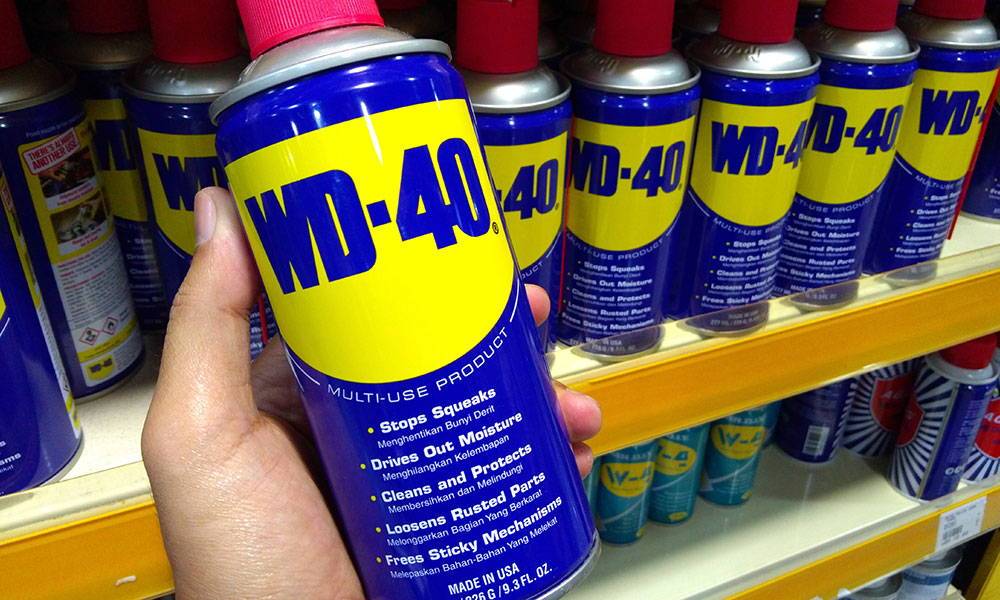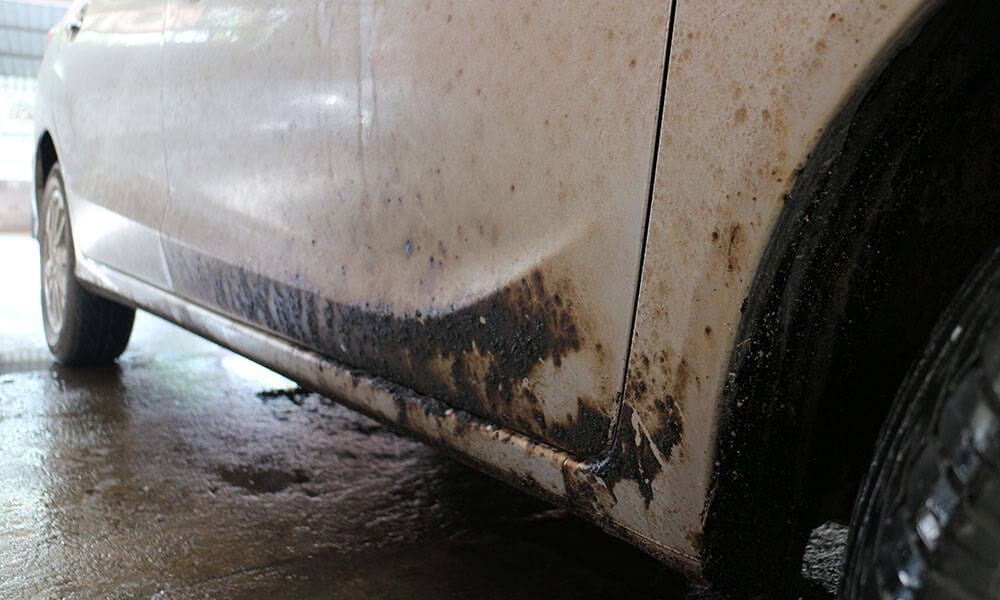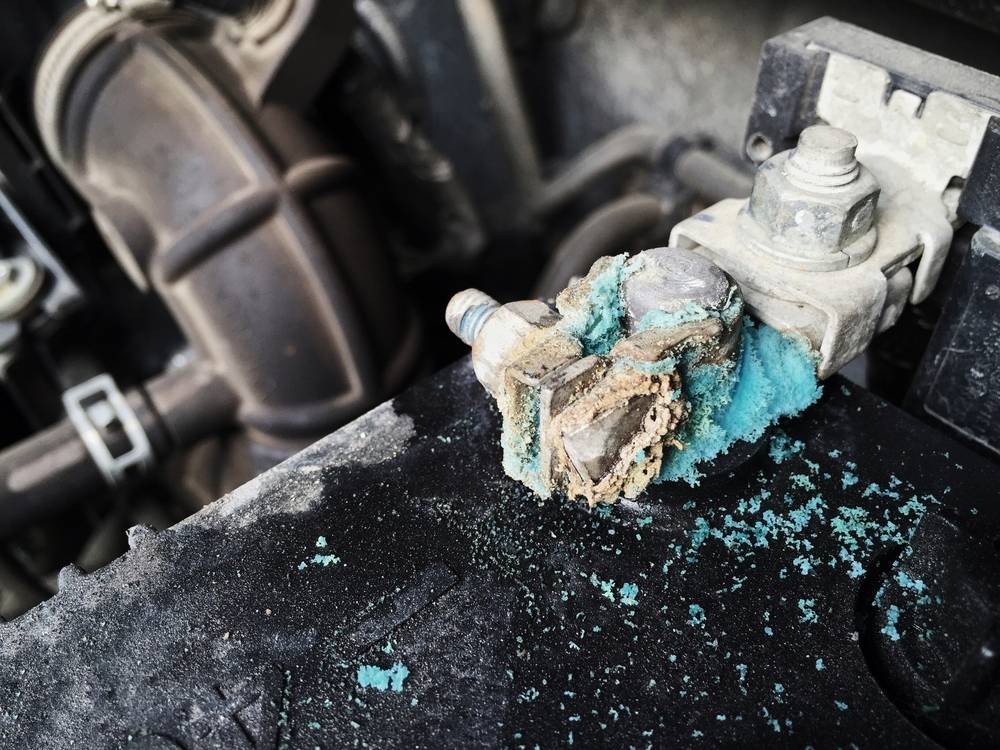Oh no! WD-40 on Car Paint! Here’s What You Need To Know
- The real ingredients of this secret recipe might surprise you!
- You can use WD-40 to fix scratches… In a pinch!
- It IS safe on your paintwork!
- Wax or sealant? Beware...
- Don’t follow the herd... WD-40 is no miracle cure!
Still want to know more? Read on.
★★★★★ "Saw this being promoted on a big YouTube channel and thought why not try it. Was a bit skeptical but WOW. Super easy to apply and car is shining. Water still pelts off 3 weeks later! Gonna ditch the wax and will continue to use." - Josh S.
What’s WD-40 Made Of?
Much like Coca-Cola, the recipe for the WD-40 multi-use product is a closely guarded secret. If you want the exact formula, you’ll have to break into the company’s San Diego bank vault, where they keep the recipe!
This causes a problem for car detailers; how can we know if it’s safe on our ride’s paint and metals?!
Using the wrong chemicals or substances could cause a heart-breaking amount of damage. We need to be sure about what we’re using!
Thankfully, some dedicated detectives recently analyzed the secret formula in their own lab. So, at long last, we now have a real idea of what goes into this little blue tin.
But there is one thing that we still don’t know for sure: The exact proportions of each ingredient. That’s still proprietary information that the company has managed to keep under wraps. Here, we have given the closest estimates.
Mineral oil - approximately 35%
Yep, good old mineral oil! This is the same stuff you’ll find in face creams, cosmetics, and baby oil. It ain’t exactly the top-secret, high-tech ingredient we were expecting!
Isoparaffinic aliphatic hydrocarbons - approximately 35%
This is similar to kerosene. It is rated as Aspiration Toxicity Category 1. I.e., highly toxic if inhaled.
Flammable aliphatic hydrocarbons - approximately 25%
These hydrocarbons are also Aspiration Toxicity Category 1. Additionally, they are also toxic to organs and the nervous system.
Oh, and they’re flammable, of course. Nasty stuff!
Alkanes
Alkanes are a component of these hydrocarbons. They are typically chemically unreactive but can still be highly flammable.
The formula contains five separate alkanes in total. Each performs a different function. For example, one, called nonane, is what gives WD-40 its powerful water-repelling properties. Another, decane, doesn’t freeze until -21 Fahrenheit and keeps the mixture a liquid at all temperatures.
Carbon dioxide - 2-3%
The propellant that forces the liquid out of the can. Compared to other alternatives, like butane or propane, carbon dioxide is less hazardous to humans and the environment.
What Do DIYers Use WD-40 For In The Detailing World?
First and foremost, WD-40 is a solvent and a degreaser. It also has lubrication properties, but they are extremely minimal. It is not a substitute for lubricants on any moving parts. If you spray a bicycle chain with WD-40, for example, it will end up drier and less lubricated than when you started!
These properties make it extremely useful for some applications and terrible at others.
Here is our breakdown of the dos and don’ts of WD-40 in the DIY detailing world.
Fix scratches
You would imagine that using a solvent to repair scratches wouldn’t make sense! But it’s actually not a bad trick if you’re in a pinch. There are two situations when WD40 can improve the appearance of minor scuffs:
- For light, surface scratches.
These aren’t any scuff marks that haven’t cut all the way through your clear coat.
First of all, the WD-40 will blast out any powdery residue. When your clear coat gets scratched, it produces fine, light-colored dust. This dust will sit in the scratch, highlighting the damage until it’s cleaned out.
Being a clear-colored lubricant, the WD-40 will act as a short-term substitute for your clear coat. It will slightly fill the grooves in the finish and moisturize the rough edges. Just to be clear, we are not saying that WD-40 is in any way a suitable replacement for a clear coat. It isn’t! But, it helps to reduce the appearance of any damage for a short time.
To try this method out is pretty simple. Give the area a quick wipe down with a microfiber cloth first. Then, blast the area with WD-40 to blow away any dust and coat the scratch. After that, a good rub with the microfiber cloth should do the trick. It won’t take a lot of work, and you should see results almost immediately.
- Removing paint transfer from other cars.
If some careless fool has knocked into your car (it was their fault, right?), there’s a good chance that their paint has scraped off onto yours. Of course, that extra color is going to stick out like a sore thumb.
WD-40 is effective at removing this additional layer of paint. Give the whole area a good spray down, and then let it soak in. After that, it’s just a case of putting in a few minutes of elbow grease with a microfiber cloth. The abrasion should lift away the offending paint. If needed, you can re-cover the area a few times until everything is gone.
To see this in action, take a look at this video to see what WD-40 can do.
So, although it was never intended for scratch-removal, WD-40 is surprisingly good!
But, what if you don’t want ‘good’? What if you want the best? Take a look at this article for a full in-depth look at the very best options for removing scratches from your ride. As a bonus, you’ll find out why Reverse: Car Scratch Remover is the tool that the DIY crowd should be using.
Remove sticky debris
As we know, WD-40 is primarily a solvent. That’s what makes it so effective at loosened rusting/corrosion or jammed up components: It breaks down the bonds that hold them tight.
And, it can work the same magic on sticky, unpleasant debris on your ride’s exterior.
Bug guts, oil, tree sap, and who knows what else. WD-40 will lubricate and loosen this gunk’s grip on your bodywork. This is the same method as removing paint transfer: Spray WD-40 here and give it some elbow grease with the microfiber towel or cloth!
The downside to this approach is the mess it creates. WD-40 is greasy, dirty, smelly stuff! Giving those bug guts a quick blast with WD-40 and a wipe down will probably get the job done, but you will be left with the new task of cleaning your ride!
We strongly recommend a purpose-built detailing spray for this job. Torque Detail Turbo Waterless Detailer is custom-made to blitz tough and sticky grime that can build up. We keep a bottle in our trunk or glove compartment, and then it’s always with us when we need it. After a few quick sprays, its non-sticky formula will banish almost any dirt from the affected areas. And the best part? It will leave your ride with a super high gloss, lush-looking shine!
As a wax, or color enhancer.
Some enthusiastic DIY warriors have used WD-40 instead of waxing. They claim that it will increase their paintwork’s color, shine, and protection from the elements.
We have to be honest. This is a terrible idea!
Maybe some people just like the idea of finding a “hack”? But when you can buy a specialized, car-specific product that is guaranteed to be safe on paintwork and guaranteed to protect it, WD-40 makes no sense!
We’re not saying that it doesn’t make your clear coat look better; it’s possible that it does, but we’re certainly not going to be trying it out! There are hundreds of useful and inventive applications for WD-40, but with the smell, the chemicals, and the greasy appearance, using it as a car wax is not one of them!
Can WD-40 Damage Car Paint?
This is the big question.
It doesn’t matter how useful WD-40 is; if it wrecks paintwork, then we’re not going near it!
There is a lot of different information out there, but we’ve rounded up exactly what you need to know about WD-40 and your car’s paint surface.
The individual components in WD-40 can be harmful to paintwork. The isoparaffinic aliphatic hydrocarbons, for example, are very similar to kerosene. Kerosene would destroy your clear coat, so people sometimes claim that WD-40 would do the same.
However, the ingredients are not used individually. WD-40 is mixed to precise proportions, and once it’s mixed together, the ingredients are safe on your paint.
Yes, you read that right. It’s safe!
But just because it won’t dissolve your car’s clear coat doesn’t mean that using it on paintwork is a good idea.
We already mentioned the smell and the greasy appearance that WD-40 leaves behind. But maybe the worst part is that WD-40 attracts dirt like a magnet. It might eliminate the bug guts or disguise the scratches in the short term, but the whole area will get filthy before long.
Finally, waxes and sealants are not as robust as your clear coat. Solvents can degrade or discolor these critical layers. A wax or sealant is essential for anyone who cares about the lifespan and the appearance of their ride. If that sounds like you, then avoid using WD-40 on any waxed or sealed surface.
How to Protect Your Car’s Paint
★★★★★ The Decon Wash Pack will strip previous coats of waxes and sealants, as well as remove surface contaminates. Your vehicle's surface is filled with contaminants. Some of these may be visible, such bug guts, bird droppings, water spots, and tree spots. And some contaminants, such as iron deposits, brake dust, and overspray may not be visible to the naked eye.
The only way to safely exploit WD-40’s talents is to use it before doing a full decontamination car wash. Decontamination is intended to remove any wax or sealant layers, so you don’t need to worry about damaging them. And the wash will get rid of all the chemicals that WD-40 leaves behind. Take a look at our 5-star rated Decon Wash Pack. It has proven itself to be one of the most valuable items in our car-care arsenal.
Contaminants are one of the biggest threats to our ride’s bodywork, but many people don’t even realize they exist! All too often, people think that the slow degradation of their ride’s exterior is inevitable. In truth, it’s totally preventable.
Traces of corrosive and staining materials aren’t just found in solvents. Salt, gas, oil, tar… Even if our ride looks clean to the eye, these substances can leave traces that wreak havoc.
A regular decontamination wash, and maybe even clay treatment, will keep your ride looking showroom-fresh for way longer than you ever thought possible!
What to Expect: Is WD-40 Safe to Use On Car Paint?
Yes!
...If you know what you’re doing!
The truth is: We actually love WD-40. It’s a brilliantly versatile product, and there will always be a space for it on our garage shelf.
If you want to use it for specific applications, like cleaning tough grime such as bird droppings, then go ahead. Or, if you absolutely have to fix a scratch ASAP, it could be an effective emergency fix. It’s just important not to see WD-40 as a miracle cure!
Now that we understand it a little better, the choice is yours. Are you happy to do a full decontamination wash afterward? And reapply waxes or sealants? If so, don’t let anything stop you from using this legendary product whenever you see fit!
★★★★★ "Saw this being promoted on a big YouTube channel and thought why not try it. Was a bit skeptical but WOW. Super easy to apply and car is shining. Water still pelts off 3 weeks later! Gonna ditch the wax and will continue to use." - Josh S.







